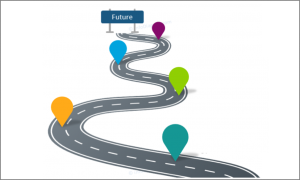
Charting Your Course Through This (or Any) Crisis
As the world panics in reaction to the Coronavirus crisis, it’s easy to get caught up in the panic. Things are changing so fast and the future seems so uncertain, that it’s scary.
Through this crisis, many people are reaching out to reassure others that things will be okay, and eventually they will. And while reassurance is a caring, considerate thing to provide, and may calm nerves a little, it isn’t enough right to get you what you want and need. It won’t prepare you to get through these tough times successfully, and it won’t help you see new possibilities or create strategies that can actually help you gain highly beneficial insights and open up opportunities right now.
Business owners cannot afford to wait this out. And finding the opportunities in the midst of a global crisis will require new and clear thinking and wise decision-making. Unfortunately, fear and increasing stress reduce our capacity to think clearly and make good decisions.
There’s a way out of this situation that can actually lead to far greater success, but to get to it, you’ll need to take seven very specific steps. Here they are:
- Take a step back and breathe. Studies show that the best way to calm your mind is to attend to your breathing. Just breathe naturally and notice your breathing. As you notice the rhythm of your breathing, it will naturally become slower and deeper, and your mind and body will begin to relax. From this relaxed state, the part of your brain that manages executive functions (thinking, planning, strategizing, decision-making) will become more active and these functions will be more available to you.
- In the more relaxed, calm state, and with your executive functions performing better, imagine your ideal future. See it in as much detail as possible. What will you be doing? What will you see? What will you feel? What experiences will you be having? What will you own? What will you have in your bank account? What will your life be like when you have this future? Include your relationships with family and friends, and factors for your personal satisfaction and happiness, as well as business and income goals.
- Come back to the moment and evaluate what you have to work with right now. What assets do you have? What do you know? What are you capable of doing? (Don’t sell yourself short here. Many people overlook things that come easy to them or that they know a lot about, assuming that others know and can do the same. That is not true. Many people still need the knowledge and experience you have and will pay to get it.)
- Compare where you are to the ideal future you want to have. This is the gap you want to focus on bridging. The main reason people get stuck is that they don’t know how to build that bridge to get from where they are to where they want to go. That won’t be you if you use these strategies. The tendency for many is to go back into fear/stress mode as they see and acknowledge the gap, especially if it seems large. If that happens, do the breathing exercise again and get back to a calm, clear thinking state before proceeding.
- Here’s the second place in which you take control. (Purposeful breathing was the first place.) With an awareness of the gap, lay out a plan. It can begin with a rough sketch, like an architect or engineer might begin with. You can add details from there. The huge advantage of creating a clear plan is that it gives your subconscious mind what it needs to eliminate fear and begin working on your behalf. We were born with one fear; fear of the unknown. It’s a survival mechanism that you will have throughout life. The way to manage it is to be clear about where you are headed, and why, and how you will get there. You can’t have that without a plan and strategies for working it.

- Once you have a general plan for your bridge. Start developing step-by-step strategies for building it. As you come up with strategies and actions you can take to keep progressing, you will begin seeing your bridge in finer detail. Lay your strategies out like a map with milestones that will help you measure your progress. Some people prefer a road map with waypoints (measurable milestones) along the way. Others prefer something that seems more easily navigated, like stepping stones across a stream..

 Still others prefer to list and number the steps. However you choose to define your journey, laying out doable steps and then taking them is key to making steady progress toward your ultimate goal. The other essential key is clarity. Be sure you are clear on where you are headed, what strategies will get you there, and what steps you need to take daily to put your strategies into practice.
Still others prefer to list and number the steps. However you choose to define your journey, laying out doable steps and then taking them is key to making steady progress toward your ultimate goal. The other essential key is clarity. Be sure you are clear on where you are headed, what strategies will get you there, and what steps you need to take daily to put your strategies into practice. - Work your plan every day. Take advantage of the time at home to do the things you haven’t had the time or opportunity to do before. See this time, not as a problem you have to wait out and worry about, but as a time to learn and grow and place yourself and your business in a better position than when all this started.
We’ve faced crises before and will again. We’ll make it through. How you get through it and how you emerge on the other side depends on what you do today, and each day, as this current crisis unfolds.
John C. Maxwell observed, “Anyone can steer a ship, but it takes a leader to chart the course.”
Nothing and no one can take your power from you if you are determined to keep it. When all this is over, you will either look back and feel very proud of how much you were able to accomplish, or you’ll feel sad and frustrated at how much you feel you lost. The difference will be in what you do today.
Don’t let what’s happening around you determine your future. Lead your own way. Chart your own course. You’ll be very glad you did.







